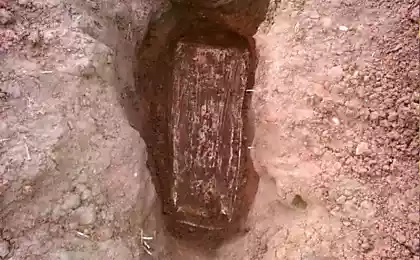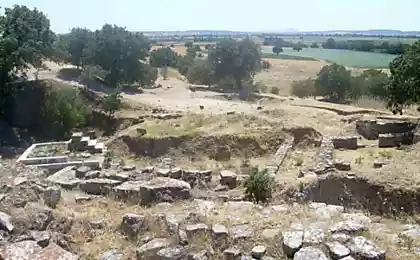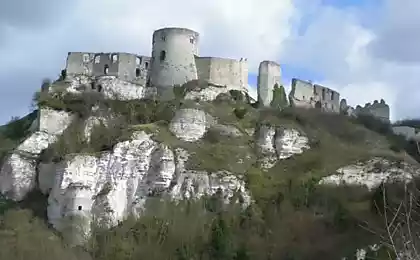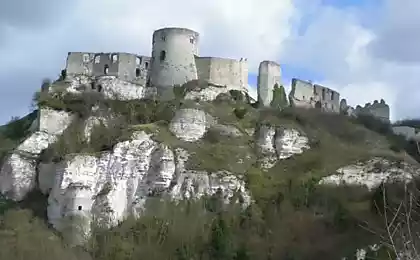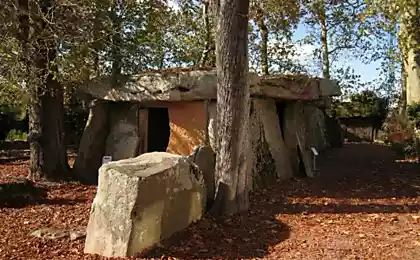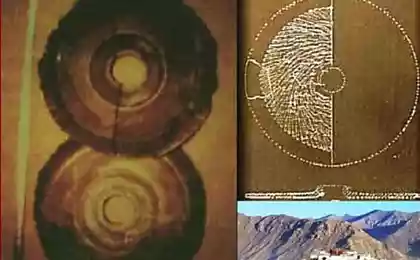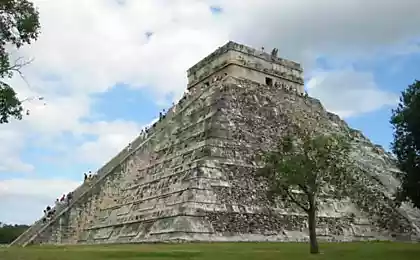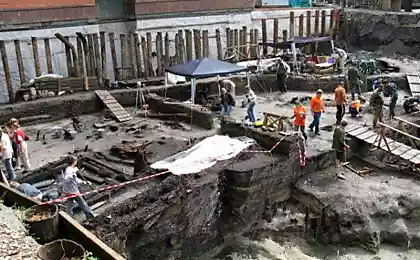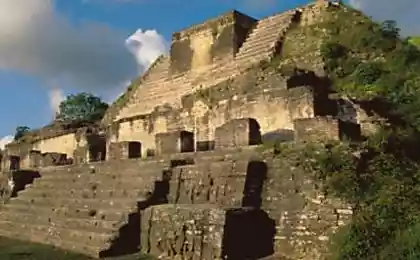757
Archaeological discoveries of recent years
Archaeological discoveries always cause a lot of publicity when researchers find a new species of dinosaur, or the ruins of the forgotten Empire and the remains of any lost city. Historical discoveries allow us to look at the past and give us new scientific knowledge. Some findings reveal a terrible secret that sometimes would be better left hidden. For example, the recent discovery of a large ancient burial of 800 babies in Ireland, which shocked even the most experienced archaeologists. In this tape You will learn about the 10 most outstanding archaeological discoveries of recent years.
The largest dinosaur
In may 2014, archaeologists found the remains of the biggest dinosaur ever discovered. It was excavated by Dr. Jose Luis Carballido, and Dr. Diego Field. It was found 150 bones, all in remarkable condition, of which recreated a partial skeleton of a huge creature. According to scientists, this new kind of titanosaur — a huge herbivore of the animal times of the Cretaceous period. Judging by the enormous femoral bones, four-legged titanosaur, with a long neck reached 40 meters long, 20 meters tall, and weighed 77 tons (as 14 African elephants). This makes it 7 tons heavier than the previous record holder — Argentinosaurus. Some scholars argue that “the largest dinosaur” is just a guess, because no complete skeleton, fragmented specimens, and methods for calculating dinosaur weight range. Anyway, many researchers still believe that this is the largest creature and calculations are correct.
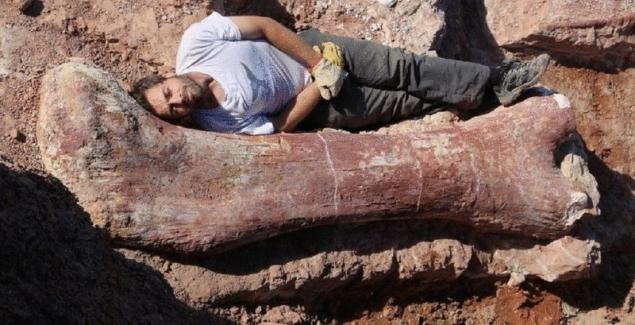
Ostia-Antica April 2014 archaeologists have unearthed a huge part of the ancient Roman port city of Ostia Antica, shedding new light on the importance of the city in history. Despite the fact that Ostia was already discovered, the new excavations have significantly expanded its borders. Were found large warehouses the size of a football field, and new evidence contradicting the fact that the Tiber river was the Northern border of Ostia. New research has shown that Ostia continued on the other side of the river. Ostia Antica was located just 30 kilometers outside of Rome, and was the main transport hub between Rome and the Western part of the Empire during the first 200 years of the Millennium. When converted Empire and the commercial port was moved to Constantinople, Rome gradually fell into decay, and was buried under a thick layer of dirt and sand. This city is a mirror of Rome, which is a Prime example of what was like Rome at this period of its history. The main value of the Ostia that it was not destroyed — it simply refused.

Colonial cannibals in CamStudio very cold winter of 1609-1610 years, mass exhaustion overtook 300 settlers the first permanent English colony in America. According to reports, the settlers were forced to turn to cannibalism to survive. William Kelso is the archaeologist digging up Jamestown since 1994, doubted the horrific reports until the last moment when his team found the skull of a 14-year-old girl in a trash pit with the remains of horses and dogs. On the skull of the girl was found the marks that were the first physical evidence of cannibalism in the colony.
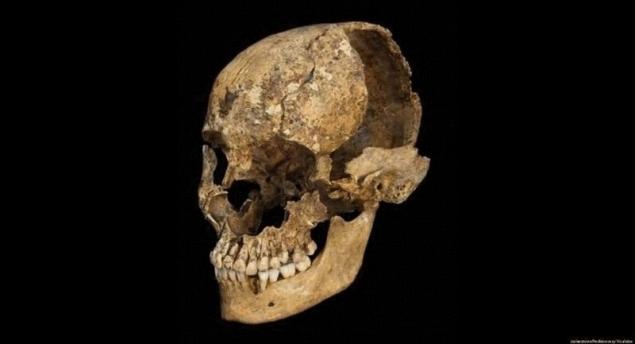
Queen Huari Perov in Northern Peru, in the center of the funerary complex of Castillo de Huarmey, Males Hersh and a team of archaeologists recently excavated the tombs of three Royal women from the Empire of the City. They were buried together with 40 noblewomen, family, clergy, and more than 1,300 artifacts, including jewelry and gold weaving tools. This is a significant discovery was the first discovery of the grave with prestigious artifacts belonging to the women of the City. The tomb dates back to 750 BC. Tombs of the kings Huari found in the past, but have never been able to find graves of this size. This discovery is helping change our understanding of female roles and hierarchy of society Varas.
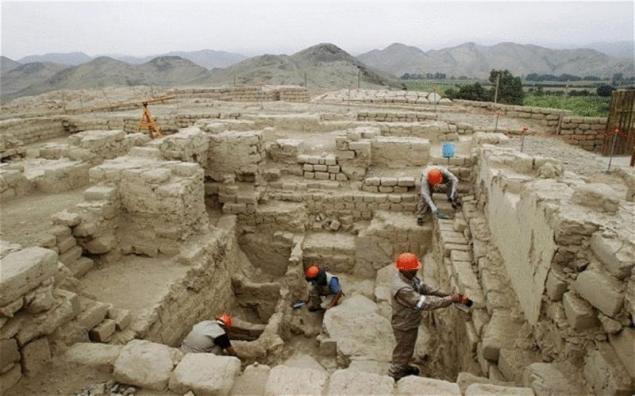
The old port and papirusa excavations in the Wadi El-Harf in Egypt, near the red sea, archaeologists found the boat, rope and fragments of pottery. Many of the artifacts had caused the name of king Khufu, or Cheops of the 4th Egyptian Dynasty. He was the initiator of the construction of the great pyramid, ruled from 2551 in 2528 BC were found numerous fragments, indicating that the Wadi El-Harf was a port for the export of copper and stones from the Sinai Peninsula to the Nile Valley. The port predates any known structure of this type for more than 1,000 years. They also found well-preserved fragments of papyrus holding account for work associated with the construction of the Great Pyramid.
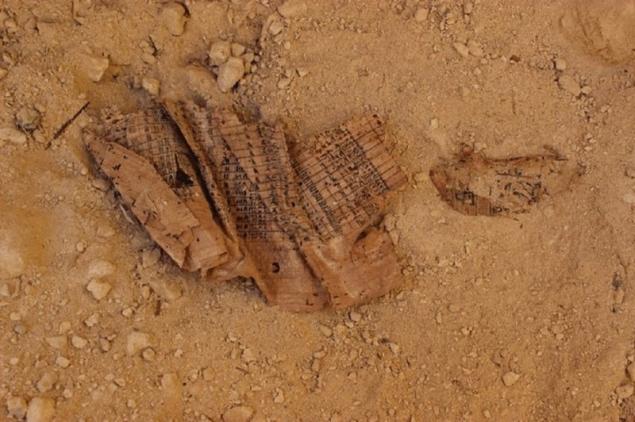
Celebratee the oldest bog body was recently found by loggers in the middle of a peat Bog in Cashel, Ireland. “Cashel man” — as it was called, according to radiocarbon study, was the oldest bog body in Europe. The previous record holder was older than more than 600 years. Cashel man lived in the Early Bronze age, approximately 2000 BC, and died a violent death, with a broken spine, a broken arm and multiple wounds from the axe in his back. The archaeologist Eamonn Kelly believes that Cashel Man was a result of sacrifice, based on his wounds and where he was found. This ritual was associated with the Royal dignity of the Iron age.
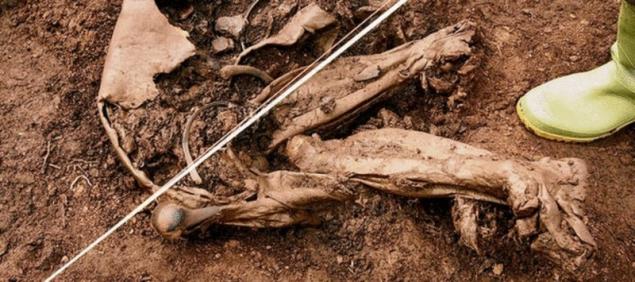
Construction Gabew the ancient city of Gabii, 15 kilometers East of Rome, archaeologists have uncovered a monumental complex of buildings. It happened at the end of 2013. Immense structure occupied a space of more than 7,000 square meters and dates back to the fourth or third century BC (preceding most of the major monuments of Rome). The building was built in several floors, with murals, colonnades and stairs. Structure unprecedented in Roman archaeology and rejects the old guesses that the Romans of that period did not build large buildings and luxury complexes. If this complex Gabija existed now, he would have exceeded in size any modern Roman house in Italy.
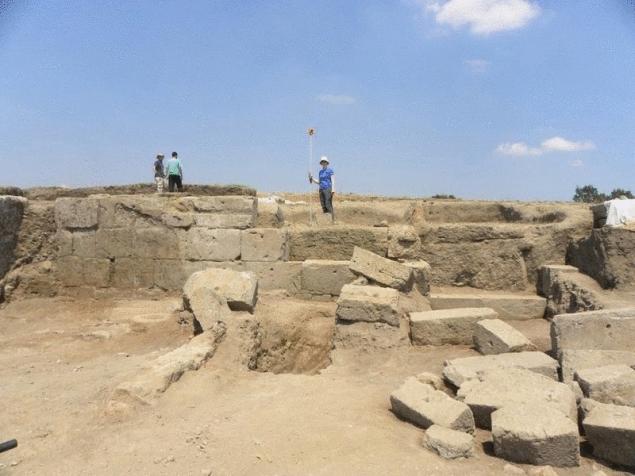
The oldest skull celovecestvo was discovered the oldest skull of Homo erectus, the age of 1.8 million years. Find in the Georgian town of Dmanisi was the reason for the new categorization of all types of ancient man. On the area of 30 square meters has been found 5 of these skulls, which are credited with the first human species that migrated from Africa. The fact that the five skulls differ in size and shape from the others found in the same place, proves that the people of Homo erectus was much more diverse in appearance than previously thought.
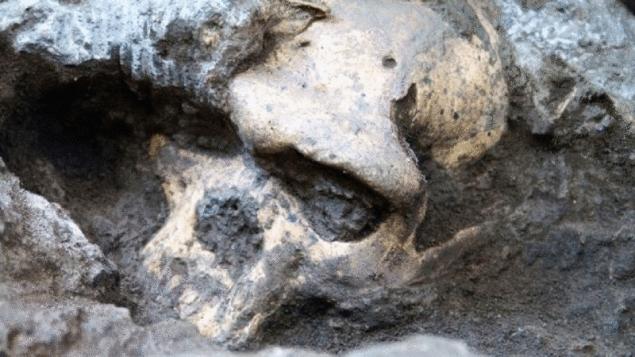
Ancient Jewish osobnyaki 2013 on mount Zion in Jerusalem have discovered well-preserved lower levels of the mansion Renderimage period of the first century BC, which probably belonged to the Jewish ruling priest. If the mansion really was an elite priestly housing, there is a theory about the connection of this house with the rulers of Jesus ' time. In the basement of the building found the bathroom, which indicates the exclusivity of the home. The mansion was located near the Palace of Herod the Great, where they found the same bathroom. James Tabor, head of excavations, said: “If this is really the priestly dwelling of a wealthy Jewish family of the first century, it immediately connects not only with the elite of Jerusalem, but Jesus himself. Those families, who arrested Jesus and subjected him to torture, because it is important for us to learn more about their history.”

The skeleton of king Richard Are popular archaeological discovery of the last few years — the bones of king Richard III, discovered under a car Park. After extensive radiocarbon studies, isotope analysis and osteological research, scientists came to the conclusion that the results completely coincide with historical accounts and genetic data of Richard III. The remains discovered in Leicester city, definitely belong to the legendary king who died in 1485. He also had scoliosis (curvature of the spine), about which so much was said historians and William Shakespeare. Archaeologists also pinpointed the place in the Field of Bosworth, where the king met his end.
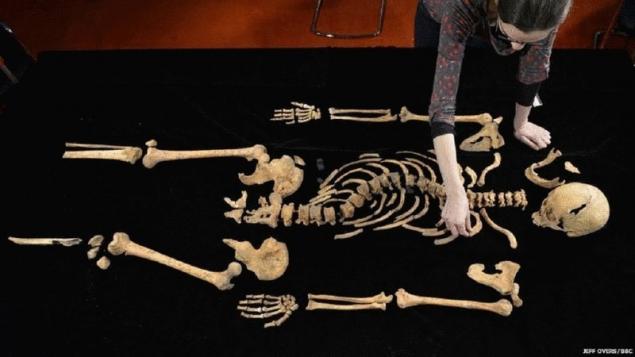
Source: lifeglobe.net/
The largest dinosaur
In may 2014, archaeologists found the remains of the biggest dinosaur ever discovered. It was excavated by Dr. Jose Luis Carballido, and Dr. Diego Field. It was found 150 bones, all in remarkable condition, of which recreated a partial skeleton of a huge creature. According to scientists, this new kind of titanosaur — a huge herbivore of the animal times of the Cretaceous period. Judging by the enormous femoral bones, four-legged titanosaur, with a long neck reached 40 meters long, 20 meters tall, and weighed 77 tons (as 14 African elephants). This makes it 7 tons heavier than the previous record holder — Argentinosaurus. Some scholars argue that “the largest dinosaur” is just a guess, because no complete skeleton, fragmented specimens, and methods for calculating dinosaur weight range. Anyway, many researchers still believe that this is the largest creature and calculations are correct.

Ostia-Antica April 2014 archaeologists have unearthed a huge part of the ancient Roman port city of Ostia Antica, shedding new light on the importance of the city in history. Despite the fact that Ostia was already discovered, the new excavations have significantly expanded its borders. Were found large warehouses the size of a football field, and new evidence contradicting the fact that the Tiber river was the Northern border of Ostia. New research has shown that Ostia continued on the other side of the river. Ostia Antica was located just 30 kilometers outside of Rome, and was the main transport hub between Rome and the Western part of the Empire during the first 200 years of the Millennium. When converted Empire and the commercial port was moved to Constantinople, Rome gradually fell into decay, and was buried under a thick layer of dirt and sand. This city is a mirror of Rome, which is a Prime example of what was like Rome at this period of its history. The main value of the Ostia that it was not destroyed — it simply refused.

Colonial cannibals in CamStudio very cold winter of 1609-1610 years, mass exhaustion overtook 300 settlers the first permanent English colony in America. According to reports, the settlers were forced to turn to cannibalism to survive. William Kelso is the archaeologist digging up Jamestown since 1994, doubted the horrific reports until the last moment when his team found the skull of a 14-year-old girl in a trash pit with the remains of horses and dogs. On the skull of the girl was found the marks that were the first physical evidence of cannibalism in the colony.

Queen Huari Perov in Northern Peru, in the center of the funerary complex of Castillo de Huarmey, Males Hersh and a team of archaeologists recently excavated the tombs of three Royal women from the Empire of the City. They were buried together with 40 noblewomen, family, clergy, and more than 1,300 artifacts, including jewelry and gold weaving tools. This is a significant discovery was the first discovery of the grave with prestigious artifacts belonging to the women of the City. The tomb dates back to 750 BC. Tombs of the kings Huari found in the past, but have never been able to find graves of this size. This discovery is helping change our understanding of female roles and hierarchy of society Varas.

The old port and papirusa excavations in the Wadi El-Harf in Egypt, near the red sea, archaeologists found the boat, rope and fragments of pottery. Many of the artifacts had caused the name of king Khufu, or Cheops of the 4th Egyptian Dynasty. He was the initiator of the construction of the great pyramid, ruled from 2551 in 2528 BC were found numerous fragments, indicating that the Wadi El-Harf was a port for the export of copper and stones from the Sinai Peninsula to the Nile Valley. The port predates any known structure of this type for more than 1,000 years. They also found well-preserved fragments of papyrus holding account for work associated with the construction of the Great Pyramid.

Celebratee the oldest bog body was recently found by loggers in the middle of a peat Bog in Cashel, Ireland. “Cashel man” — as it was called, according to radiocarbon study, was the oldest bog body in Europe. The previous record holder was older than more than 600 years. Cashel man lived in the Early Bronze age, approximately 2000 BC, and died a violent death, with a broken spine, a broken arm and multiple wounds from the axe in his back. The archaeologist Eamonn Kelly believes that Cashel Man was a result of sacrifice, based on his wounds and where he was found. This ritual was associated with the Royal dignity of the Iron age.

Construction Gabew the ancient city of Gabii, 15 kilometers East of Rome, archaeologists have uncovered a monumental complex of buildings. It happened at the end of 2013. Immense structure occupied a space of more than 7,000 square meters and dates back to the fourth or third century BC (preceding most of the major monuments of Rome). The building was built in several floors, with murals, colonnades and stairs. Structure unprecedented in Roman archaeology and rejects the old guesses that the Romans of that period did not build large buildings and luxury complexes. If this complex Gabija existed now, he would have exceeded in size any modern Roman house in Italy.

The oldest skull celovecestvo was discovered the oldest skull of Homo erectus, the age of 1.8 million years. Find in the Georgian town of Dmanisi was the reason for the new categorization of all types of ancient man. On the area of 30 square meters has been found 5 of these skulls, which are credited with the first human species that migrated from Africa. The fact that the five skulls differ in size and shape from the others found in the same place, proves that the people of Homo erectus was much more diverse in appearance than previously thought.

Ancient Jewish osobnyaki 2013 on mount Zion in Jerusalem have discovered well-preserved lower levels of the mansion Renderimage period of the first century BC, which probably belonged to the Jewish ruling priest. If the mansion really was an elite priestly housing, there is a theory about the connection of this house with the rulers of Jesus ' time. In the basement of the building found the bathroom, which indicates the exclusivity of the home. The mansion was located near the Palace of Herod the Great, where they found the same bathroom. James Tabor, head of excavations, said: “If this is really the priestly dwelling of a wealthy Jewish family of the first century, it immediately connects not only with the elite of Jerusalem, but Jesus himself. Those families, who arrested Jesus and subjected him to torture, because it is important for us to learn more about their history.”

The skeleton of king Richard Are popular archaeological discovery of the last few years — the bones of king Richard III, discovered under a car Park. After extensive radiocarbon studies, isotope analysis and osteological research, scientists came to the conclusion that the results completely coincide with historical accounts and genetic data of Richard III. The remains discovered in Leicester city, definitely belong to the legendary king who died in 1485. He also had scoliosis (curvature of the spine), about which so much was said historians and William Shakespeare. Archaeologists also pinpointed the place in the Field of Bosworth, where the king met his end.

Source: lifeglobe.net/
The item-based Pacific fleet is a new threat to the world heritage
March, March left – psychologists advise to go synchronous

